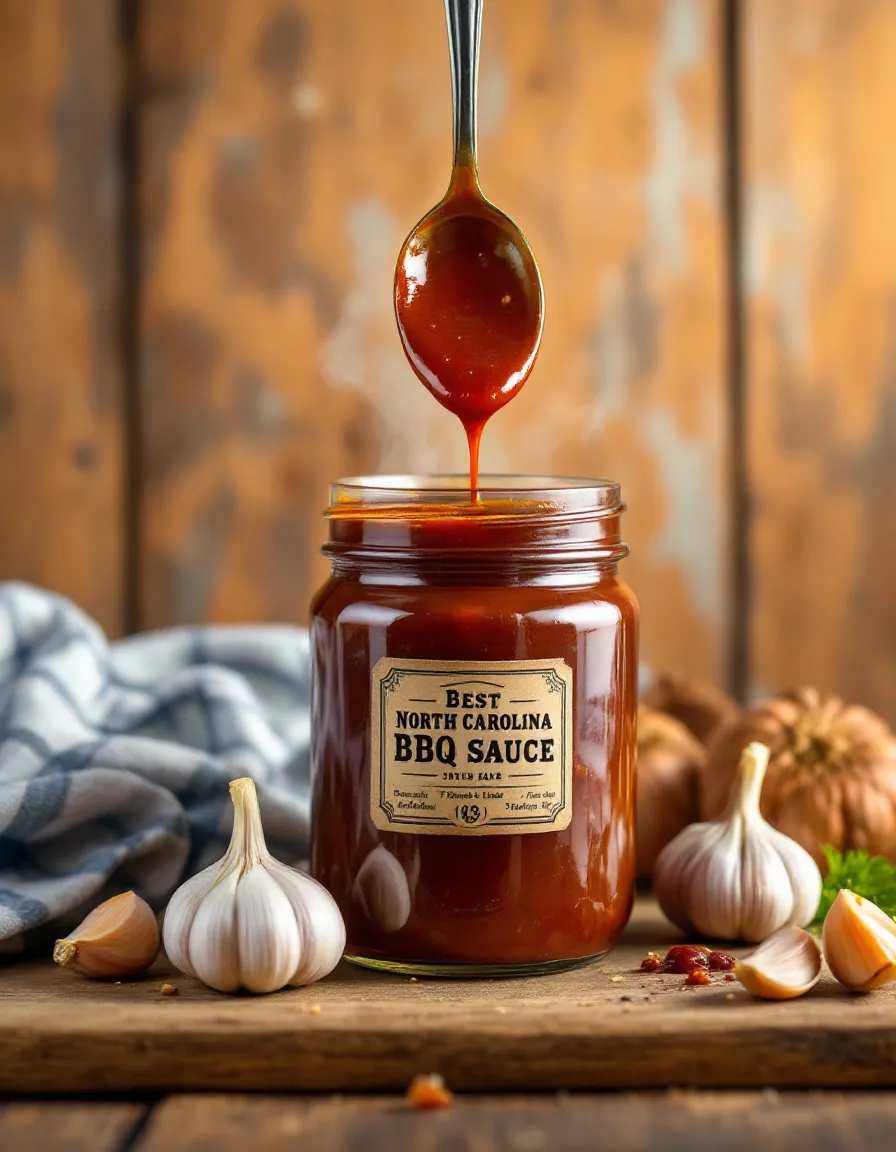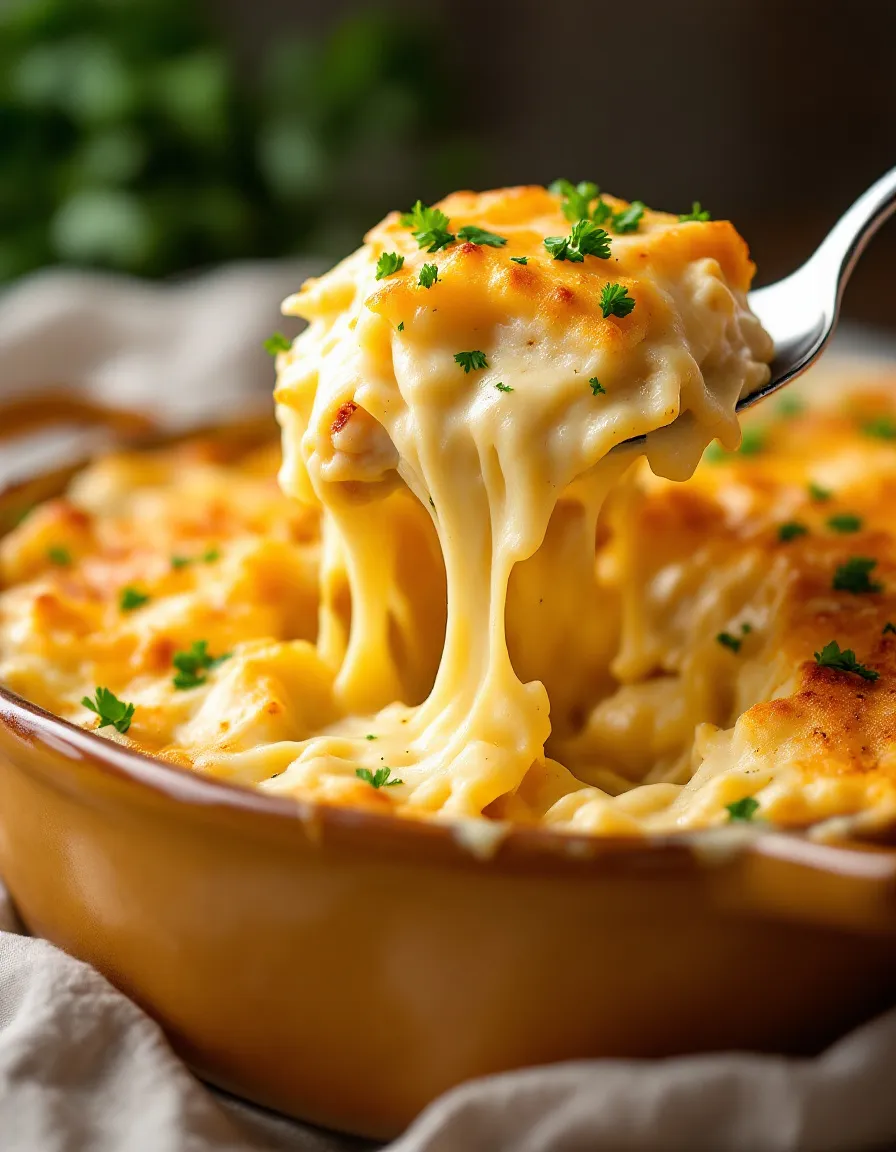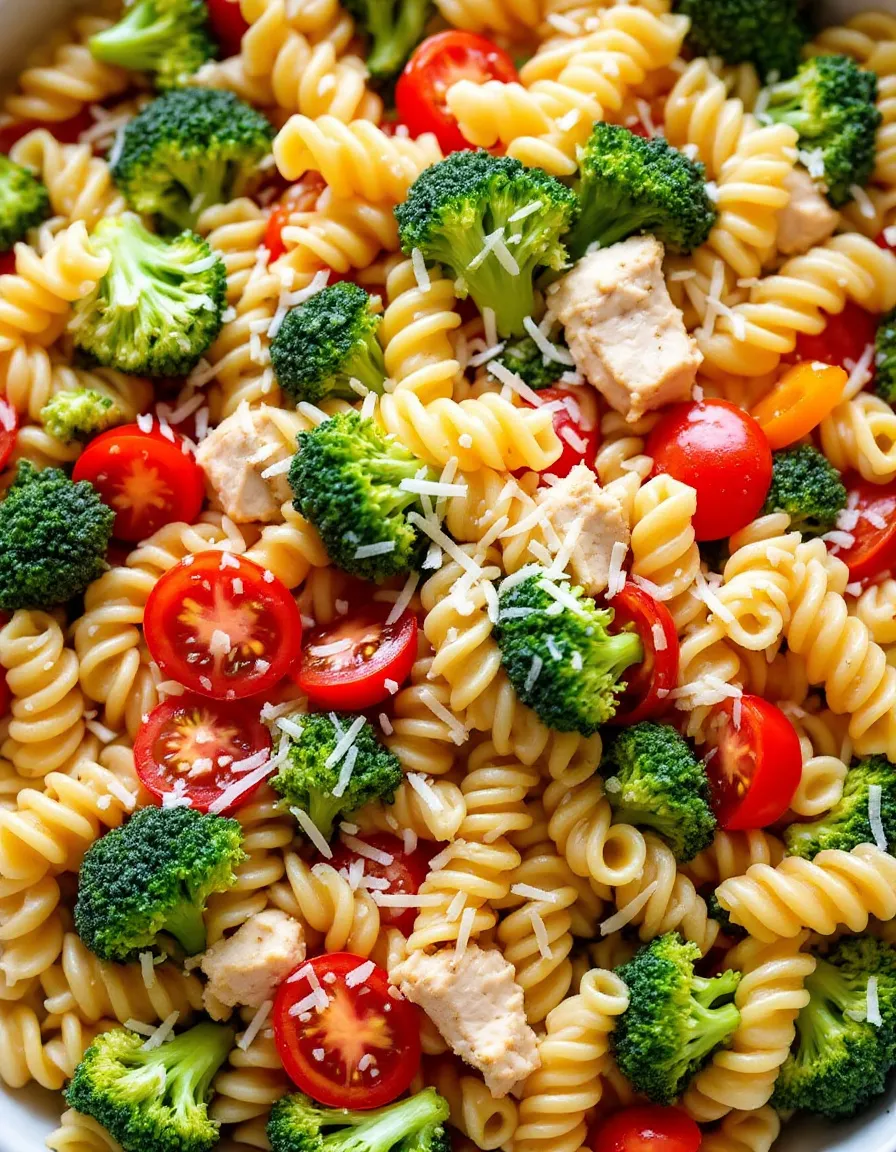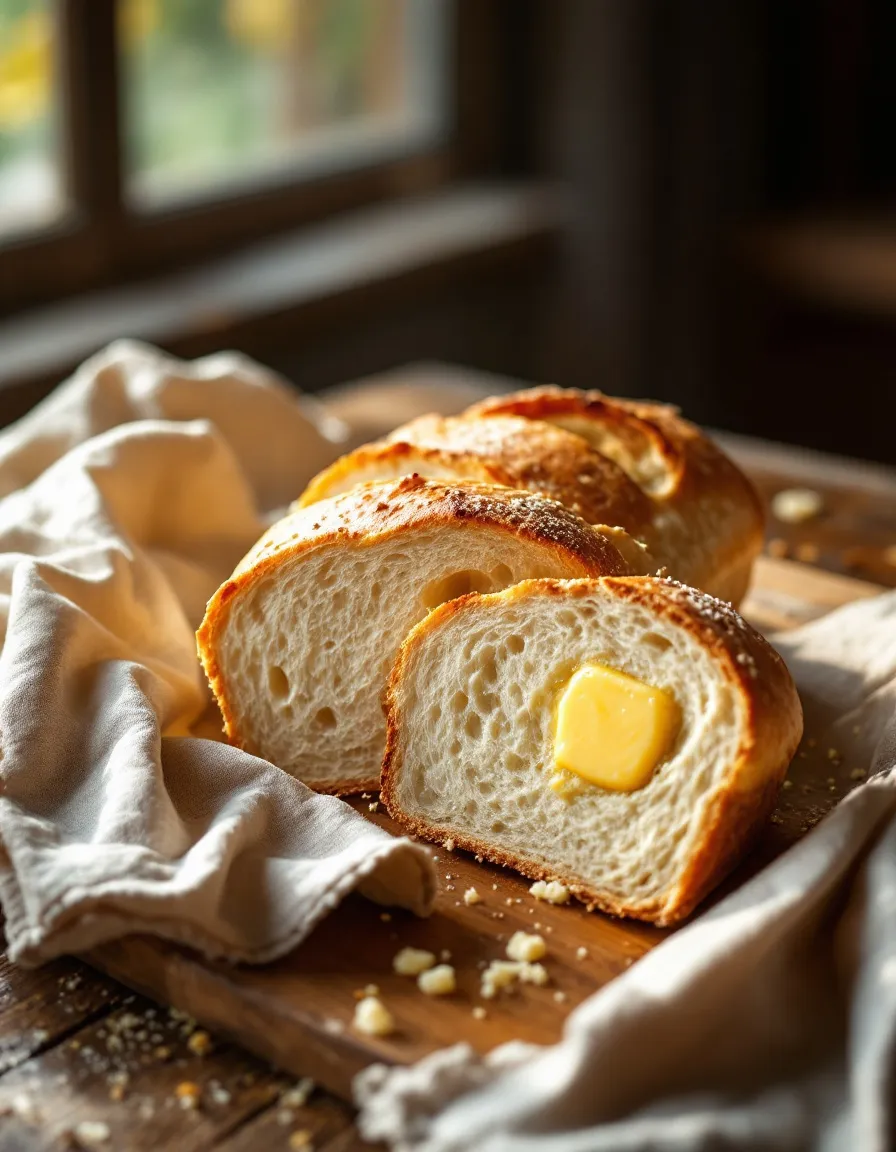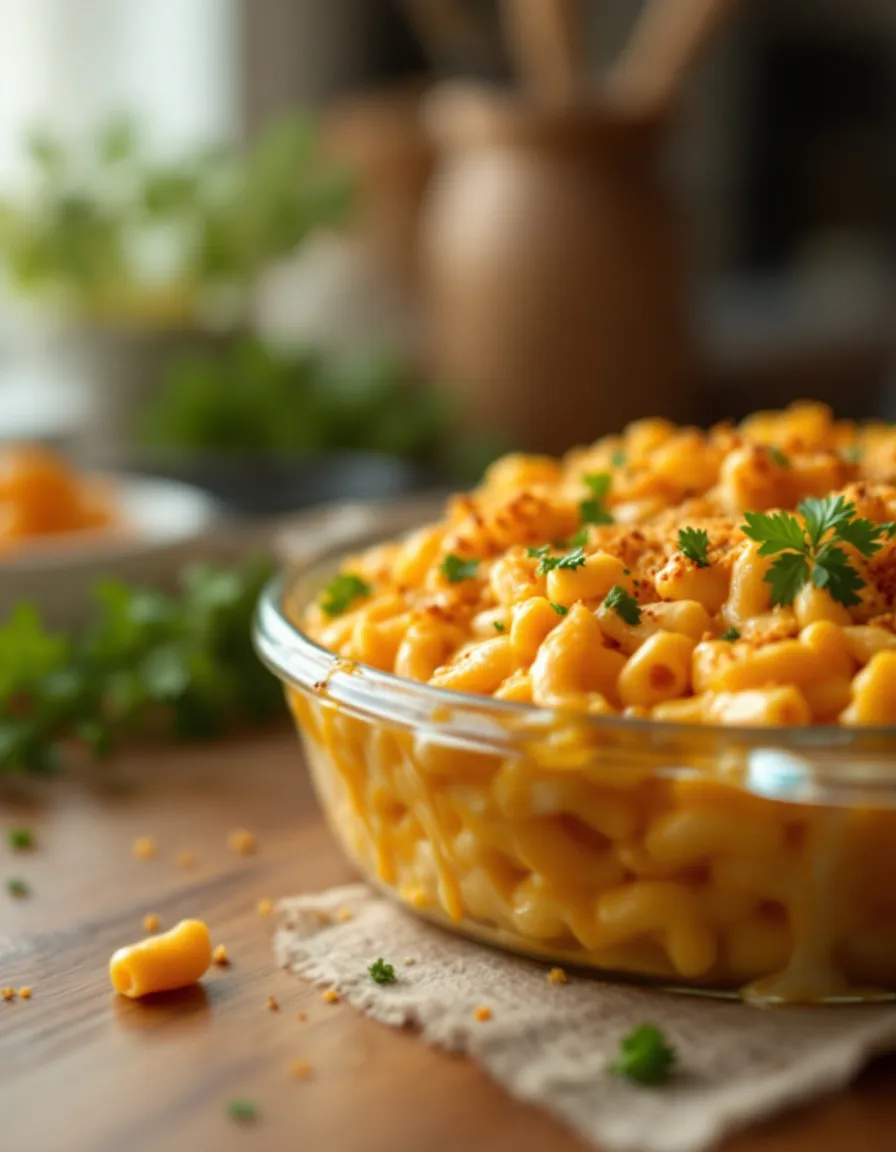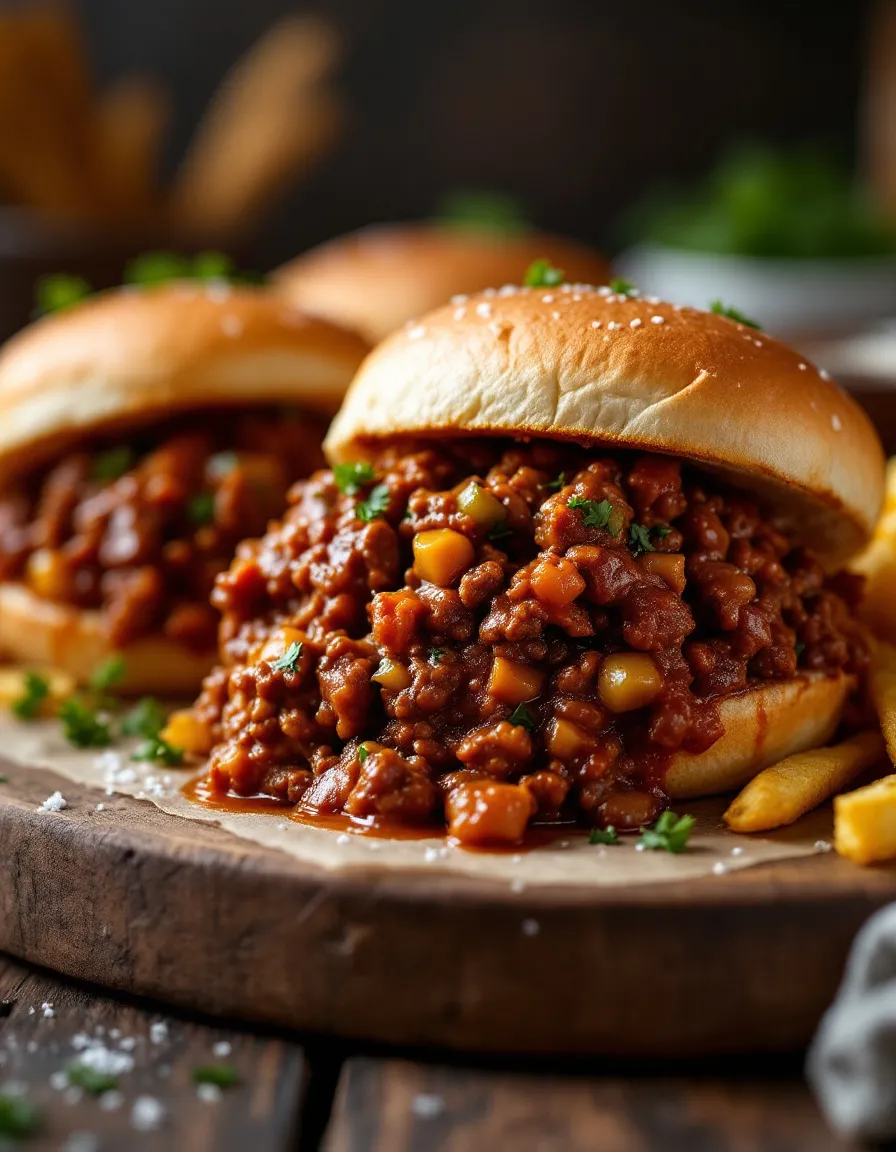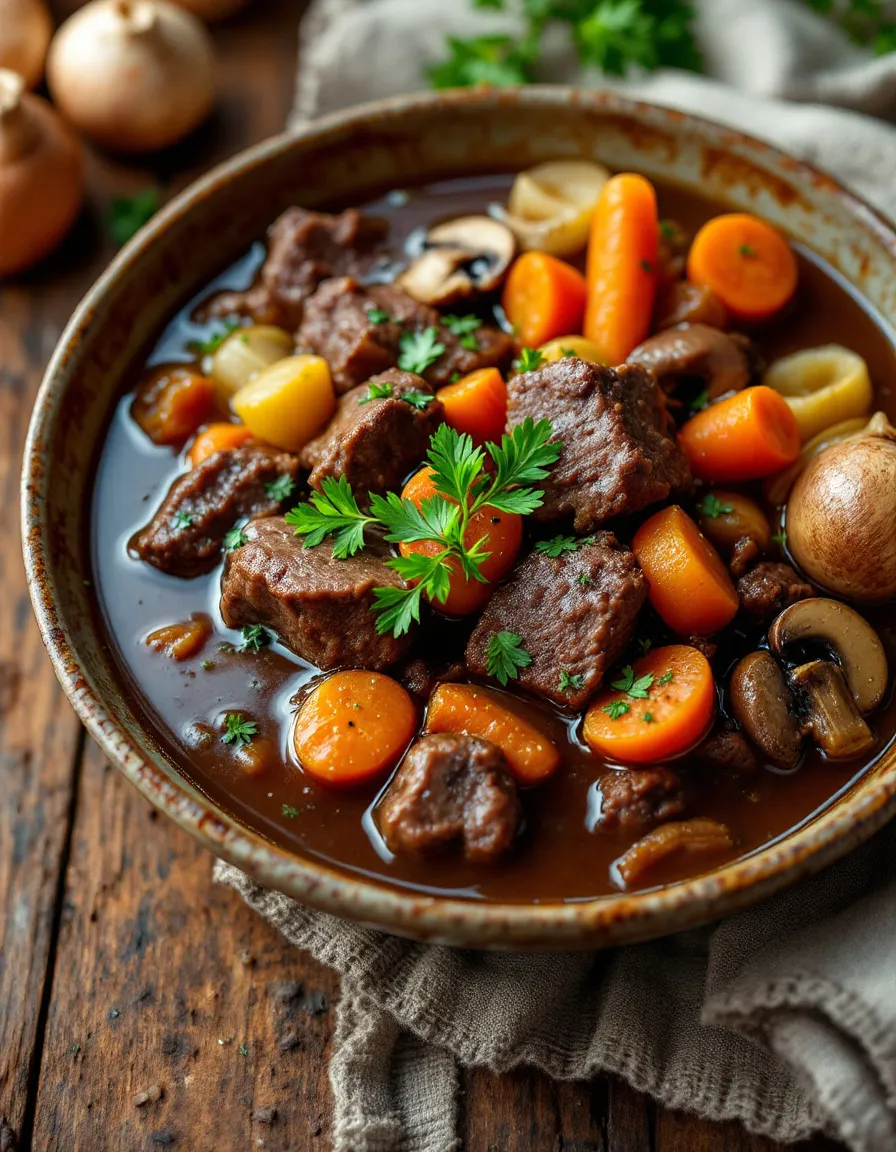North Carolina BBQ Sauce: A Taste of Southern Tradition
North Carolina BBQ sauce is an iconic condiment that brings a unique twist to any dish it graces. Rich in flavor and steeped in tradition, this sauce balances sweetness, tanginess, and a dash of heat, making it perfectly suitable for various meats, especially slow-smoked pork. Its deep-rooted Southern heritage ensures that every bite evokes feelings of comfort, celebration, and homeliness.
As you delve into the world of North Carolina BBQ sauce, you’ll discover the sensations it brings. The sharpness of vinegar complements the sweetness of molasses and brown sugar, while the spices lend depth and warmth to the blend. Whether you’re slathering it on a pulled pork sandwich or using it as a marinade for grilled chicken, this sauce is destined to tantalize your taste buds and elevate your BBQ game.
Quick Recipe Highlights
- Flavor Profile: The balancing act between vinegar tang, sweet molasses, and a hint of heat creates a marvelous explosion of flavor in every dish.
- Texture: A smooth yet thick consistency ensures a delightful cling to meats, enhancing every bite without overwhelming the dish.
- Aroma: Notes of garlic, spices, and sweet molasses waft through the air, making it irresistible even before tasting it.
- Visual Appeal: A rich, glossy hue, often brownish-red, invites diners in and promises a delicious experience ahead.
- Skill Level Needed: This recipe requires minimal cooking techniques, making it accessible for beginners and enjoyed by seasoned cooks alike.
- Special Equipment: A mixing bowl and a whisk are all you need; it’s that straightforward!
Recipe Overview
- Difficulty Level: This BBQ sauce is deemed easy due to its straightforward ingredient list and quick preparation, suitable for cooks of all ranges.
- Category: It falls under sauces and condiments, complementing BBQ meals perfectly during gatherings and cookouts.
- Cuisine: Rooted deeply in Southern American cuisine, this sauce reflects the flavors and culture of North Carolina’s BBQ tradition.
- Cost: The ingredients are generally inexpensive, making this a cost-effective addition to your cooking repertoire.
- Season: Ideal for summer BBQs, this sauce is best enjoyed during warmer months when grilling comes to life.
- Occasion: Perfect for family gatherings, tailgating events, or summer cookouts, this sauce makes every occasion special.
Why You’ll Love This Recipe
The appeal of North Carolina BBQ sauce lies primarily in its ability to complement a variety of dishes without overpowering them. Its hearty yet balanced flavor profile allows it to enhance the natural taste of grilled meats, making every meal a flavorful adventure. This sauce not only tantalizes your taste buds but also provides a nurturing warmth reminiscent of Southern hospitality, inviting you to savor every bite.
Convenience is another reason this recipe shines. With a quick prep time and simple ingredients, you can whip up this delightful condiment in just a few minutes, allowing you more time to enjoy your meal. Plus, it can be made in larger batches and stored for when unexpected guests pop by, minimizing your time in the kitchen during those crucial moments of entertaining.
Nutritionally, North Carolina BBQ sauce offers advantages as well. Made primarily from vinegar and spices, it contains fewer calories compared to creamy counterparts while delivering a punchy flavor. Using this sauce can help make your meals more exciting without adding excessive calories, making it a health-conscious choice for flavor enthusiasts.
This BBQ sauce also holds significant social value. Sharing a meal enhanced with your homemade North Carolina BBQ sauce can create a welcoming atmosphere. It encourages gathering around the grill, encompasses lively discussions about flavors, and can even ignite a friendly competition among guests over who can create the best BBQ dish.
Cost-effectiveness cannot be overlooked; this recipe allows you to create a restaurant-quality condiment in the comfort of your home without breaking the bank. The readily available ingredients make it accessible, ensuring you can enjoy its unique flavors without the need to hunt down specialty items.
Historical Background and Cultural Significance
The origins of North Carolina BBQ sauce trace back to the early days of American colonization when vinegar was a staple ingredient in Southern cooking. Over time, the integration of local ingredients led to the unique formulation seen today, characterized by its vinegar base and distinct spice blend. Southern cooks utilized whatever was available, cementing the sauce as a cultural staple that represents the resourcefulness of early barbecue traditions.
Culturally, this sauce embodies the spirit of Southern BBQ, which is steeped in community bonding and celebration. It signifies more than just flavor; it represents gathering around loved ones, sharing stories, and creating cherished memories. Festivals dedicated to this beloved cuisine often feature competitions, showcasing families’ unique recipes and strategies, highlighting the cultural importance of North Carolina BBQ sauce.
The recipe has evolved over the years, with variations emerging based on regional preferences. Whether it’s the inclusion of mustard in South Carolina or the sweetness accentuated in Tennessee versions, each style tells its own story of local ingredients and preferences. However, the foundational principles remain the same, ensuring North Carolina sauce retains its essential identity amidst these adaptations.
Today, North Carolina BBQ sauce continues to thrive, representing a culinary heritage that is honored in backyard cookouts and renowned restaurants alike. Foodies and home cooks alike seek to replicate its unique depth of flavor, keeping the tradition alive through family recipes passed down through generations.
Ingredient Deep Dive
Vinegar: As the main component of North Carolina BBQ sauce, vinegar adds a sharp tang that enhances the overall flavor. Historically, vinegar was used to preserve meats; its acidity helps tenderize and brighten flavors. Nutritionally, vinegar supports digestion and can potentially aid in weight management.
Selection tips for vinegar include opting for high-quality varieties that contribute to a more vibrant taste. It can be stored in a cool, dark place and has a long shelf life. Alternative options like apple cider vinegar can provide varying flavor profiles while retaining the same tanginess.
Brown Sugar: This sweetener adds depth and a caramel-like flavor to the sauce, balancing out the acidity from the vinegar. Historically, brown sugar was used in Southern recipes to add sweetness and moisture to dishes, particularly in sauces and marinades.
Choosing high-quality brown sugar ensures richer flavors. Store it in an airtight container to prevent hardening, and you can substitute it with honey or maple syrup for a different taste. Remember that these alternatives may alter the flavor profiles slightly, but they still contribute to the sauce’s overall sweetness.
Spices (like paprika, garlic powder, and black pepper): These spices elevate the flavor of North Carolina BBQ sauce, bringing in warmth and complexity without overwhelming the primary flavors. Historically, spices were used to enhance flavors in home cooking, a tradition that continues today.
When selecting spices, use fresh ones for the best flavor and aroma. Store them away from light and heat. If you prefer adjustments, incorporate different spices or herbs, like cayenne pepper for heat or thyme for earthiness, allowing for personalization of the recipe.
Common Mistakes to Avoid
- Using low-quality vinegar can lead to a lackluster flavor. Always opt for at least 5% acidity vinegar for the best results.
- Overlooking the balance of sweet and sour, leading to an overly tangy or sweet outcome; always adjust to personal taste.
- Neglecting to let the sauce rest post-preparation, which can result in muted flavors; give it time to meld for at least 30 minutes.
- Skipping quality ingredients; cheap components diminish the overall flavor profile you’re aiming for.
- Using too much salt too early; it’s best to adjust salt levels towards the end, to avoid over-salting.
- Forgetting to taste and adjust seasonings throughout the cooking process can leave your sauce lacking depth.
- Not storing the sauce properly; it should be refrigerated in an airtight container to maintain freshness.
- Ignoring the importance of mixing well; ensure all components are thoroughly blended for a harmonious flavor experience.
- Cooking too long can make the sauce too thick; keep an eye on your simmer time to avoid this issue.
- Being afraid to experiment—don’t hesitate to add your personal spin; this sauce is flexible and welcomes creativity!
Essential Techniques
Balancing Flavors: Essential to creating the perfect BBQ sauce, balancing flavors involves adjusting the ratios of sweet, sour, and spicy components to achieve harmony. To master this technique, always start with equal ratios and adjust from there until desired flavor is achieved. Common pitfalls include adding too much sweetness or acidity too quickly; instead, take small steps and taste frequently to gauge balance.
Mixing Techniques: Properly mixing ingredients ensures that flavors meld together seamlessly. Use a whisk to combine dry ingredients before adding wet ones for an even distribution. The common pitfall is under-mixing, leaving clumps in the sauce; mix until smooth and fully integrated for a quality sauce with no lumps.
Pro Tips for Perfect North Carolina BBQ Sauce
1. Let your sauce sit overnight in the fridge; flavors develop and deepen, resulting in a tastier sauce.
2. Experiment with additional spices to create a sauce uniquely yours, such as adding a hint of cumin or smoked paprika for a smokier note.
3. Always taste for seasoning adjustments during and after cooking; it’s essential for flavor balance.
4. Use high-quality ingredients whenever possible; the difference in taste is significant.
5. Consider adding a dash of hot sauce for an extra kick; it will elevate the overall taste profile.
6. For a tangier sauce, increase the vinegar content slightly; adjust to your preference.
7. Use a non-reactive saucepan (like stainless steel) to avoid altering flavor during the cooking process.
8. Store your completed sauce in a clean, airtight container for maximum freshness and quality retention.
Variations and Adaptations
Regional variations of North Carolina BBQ sauce reflect local tastes and traditions. For instance, the addition of mustard can create a tangy South Carolina-style BBQ sauce, while other regions may prefer a sweeter or spicier take. Seasonal adaptations can also be explored by incorporating fresh herbs like basil or cilantro during summer for a vibrant twist.
Dietary modifications are possible, too. For a low-sugar version, consider replacing brown sugar with a natural sweetener like stevia or monk fruit. Flavor variations can include smoky elements, achieved by using smoked vinegar or adding a few drops of liquid smoke for intensity. Texture can be modified by blending the final sauce for a smoother consistency or keeping it chunky for added character.
Serving and Presentation Guide
When serving North Carolina BBQ sauce, consider presenting it in small, decorative bowls as an accompaniment to any meat dish, allowing guests to add their desired amount. Garnishing with fresh herbs, like parsley or chives, enhances visual appeal. Traditional accompaniments include BBQ pulled pork sandwiches or grilled chicken. Serve warm or at room temperature but avoid chilling it, as it can reduce the flavor profile.
Portions should be controlled, but allow for seconds, as this sauce often leaves guests wanting more. Providing a ladle with the sauce can encourage self-serving, making it feel more interactive at gatherings. With its inviting aroma and deliciously glossy appearance, your North Carolina BBQ sauce will be the star of the table.
Wine and Beverage Pairing
When it comes to wine pairings, opt for a fruity red like Zinfandel or Shiraz, which complements the sweet and spicy notes of North Carolina BBQ sauce. These wines elevate the flavor without clashing. For non-alcoholic alternatives, iced tea or lemonade are refreshing matches that help cleanse the palate. If enjoying coffee or tea afterward, a robust dark roast coffee pairs nicely, enhancing the sauce’s flavors while providing a delightful end note to the meal. Always serve beverages chilled or at optimal temperatures for maximum enjoyment!
Storage and Shelf Life
For optimal storage, North Carolina BBQ sauce should be kept in an airtight container and refrigerated. This preserves the freshness and extends shelf life for up to 1 month. Keep an eye out for any signs of spoilage, including off smells or changes in texture. If reheating, gently warm it on the stovetop to avoid loss of flavor. North Carolina BBQ sauce is also freezer-friendly; ensure it’s in a suitable container to avoid freezer burn and can be stored for up to 6 months.
Make Ahead Strategies
Making North Carolina BBQ sauce ahead of time is highly recommended, as it gives the flavors time to develop richly. Prepare the sauce two to three days before your intended use for the best outcome. This can easily be stored in the refrigerator. If planning for future meals, consider preparing larger batches and freezing them in portions, allowing for quick use in last-minute meals. Just ensure to leave out fresh herbs until serving to maintain their vibrant taste!
Scaling Instructions
Scaling this BBQ sauce recipe is simple. Halving the ingredients will yield just as impactful results and is great for smaller gatherings. Conversely, doubling or tripling can serve large groups; ensure you have an appropriately sized pot for cooking. The cooking time may slightly vary with larger batches, so keep an eye on texture and flavor as it cooks. For storage, use multiple smaller containers rather than one large one to ensure quicker thaw times later.
Nutritional Deep Dive
North Carolina BBQ sauce is low in calories, with each serving typically holding around 50 calories, depending on sugar content. It’s composed mainly of carbohydrates from sugars and a small amount of fat from any included oils. Micronutritionally, the ingredients contribute vitamins and minerals, such as potassium from vinegar and magnesium from spices, which can support overall health.
When considering dietary considerations, serving sizes are crucial; while the sauce is low in calories, overindulgence can lead to hidden added sugars that could impact blood sugar levels. It’s a great choice for adding flavor to dishes without excessive calories or fats, promoting overall weight management success.
Dietary Adaptations
For gluten-free individuals, this recipe is naturally gluten-free; however, always check your vinegar and spices for cross-contamination. Dairy-free diets also align perfectly since the ingredients contain no animal products. Vegans will also appreciate this recipe, making it suitable for various dietary preferences.
For low-carb enthusiasts, using a sugar substitute can make this sauce keto-friendly. Additionally, paleo dieters can use natural sweeteners while avoiding processed items. Low-FODMAP enthusiasts can also enjoy this recipe by checking individual ingredient tolerances, ensuring all spices included are suitable.
Troubleshooting Guide
For texture issues, such as a sauce that is too thin, consider allowing it to simmer longer to reduce and thicken. Conversely, if too thick, small amounts of water or additional vinegar can help achieve the desired consistency. If the flavor is unbalanced, sweetness can be increased with sugar or honey, while acidity can be balanced with a splash of vinegar or citrus juice.
Temperature problems may arise if the sauce isn’t hot enough when serving; gently warm it on the stove before serving. Common pitfalls with equipment challenges, like scorched sauce at the bottom of the pot, can be avoided by controlling heat levels and stirring frequently during cooking. For ingredient substitutions, utilize similar flavor profile components while continuously tasting for balance during adjustments.
Recipe Success Stories
Community feedback on North Carolina BBQ sauce often highlights its versatility in various recipes, from slathering on grilled meats to folding into baked beans. Readers share delightful adaptations, such as using it for marinades or as dipping sauces, celebrating its ability to transform ordinary dishes into flavorful experiences. Photography tips for showcasing the sauce include using natural light and colorful garnishes to enhance visual appeal.
Frequently Asked Questions
Can I make this sauce in advance?
Absolutely! In fact, making it in advance allows flavors to meld beautifully. Store it in an airtight container in the refrigerator for optimal freshness.
How long does the sauce last in the fridge?
When properly stored in an airtight container, North Carolina BBQ sauce can last for up to a month in the refrigerator without losing flavor.
Can I freeze the BBQ sauce?
Yes, you can freeze it! Store the sauce in freezer-safe containers or bags, and it should stay fresh for up to six months.
What meats pair best with this sauce?
This sauce shines on pulled pork, grilled chicken, and ribs, but it can also enhance the flavor of tofu or tempeh for plant-based dishes.
Is it possible to adjust the spiciness?
Definitely! To increase heat, add more black pepper or a dash of cayenne. To decrease it, simply use less of these spices.
What is the best way to serve it?
Serve the sauce warm or at room temperature in a small bowl, allowing guests to add it to their plates as desired. It also makes a great dipping sauce!
Can I substitute the vinegar?
While apple cider vinegar is a popular substitute, experimenting with different types like rice vinegar can yield unique flavors as well.
How should I store leftovers?
Leftover sauce should be stored in a clean, airtight container in the refrigerator for later use, and you can also freeze portions if desired.
Is this sauce suitable for vegans?
Yes, this North Carolina BBQ sauce is entirely vegan-friendly, making it a great option for anyone on a plant-based diet.
Can I change the sugar quantity?
Absolutely, feel free to adjust the sugar content to sweeten or reduce sweetness according to your preference for personal taste satisfaction.
How can I enhance the depth of flavor?
Adding smoked paprika or a splash of bourbon can deepen flavor complexity, offering a delightful twist to the traditional recipe.
Additional Resources
Consider exploring related recipes, such as pulled pork or grilled chicken, that pair perfectly with North Carolina BBQ sauce. Technique guides about proper grilling methods could also enhance your BBQ experience, ensuring you create delicious meals every time. For ingredient recommendations, look into quality brands for vinegar and spices to elevate the overall taste of your sauce.
Join the Conversation
We invite you to share your experiences and photography while making North Carolina BBQ sauce on social media! Share your reviews and variations in the comments, engaging with fellow food enthusiasts. Let’s celebrate the creativity inspired by this beloved recipe and build a community centered around cooking and shared meals.
The Recipe
North Carolina BBQ Sauce
Serves: 12 servings
Prep Time: 10 mins
Cook Time: 30 mins
Total Time: 40 mins
Kitchen Equipment Needed
- Mixing bowl
- Whisk
- Medium saucepan
- Airtight container for storage
Ingredients
- 1 cup apple cider vinegar
- 1/2 cup brown sugar
- 1/4 cup ketchup
- 1 tablespoon paprika
- 1 tablespoon garlic powder
- 1 teaspoon black pepper
- 1 teaspoon salt
Directions
- In a medium saucepan, whisk together the vinegar, brown sugar, and ketchup until well combined.
- Add the paprika, garlic powder, black pepper, and salt, and whisk to combine.
- Heat over medium heat for about 20-30 minutes, stirring occasionally until the sauce thickens slightly.
- Taste and adjust seasoning as necessary, then remove from heat and allow to cool.
- Store in an airtight container in the refrigerator until ready to use.
Recipe Notes
- This sauce can be stored in the refrigerator for up to a month.
- For a spicier version, consider adding cayenne pepper.
- Feel free to experiment with other spices for a twist on the traditional flavor.
- This sauce can also be used as a marinade for grilling meats.
